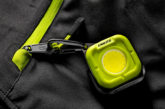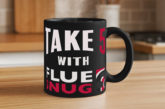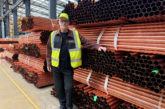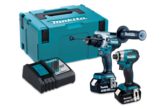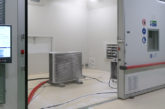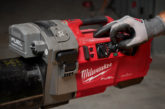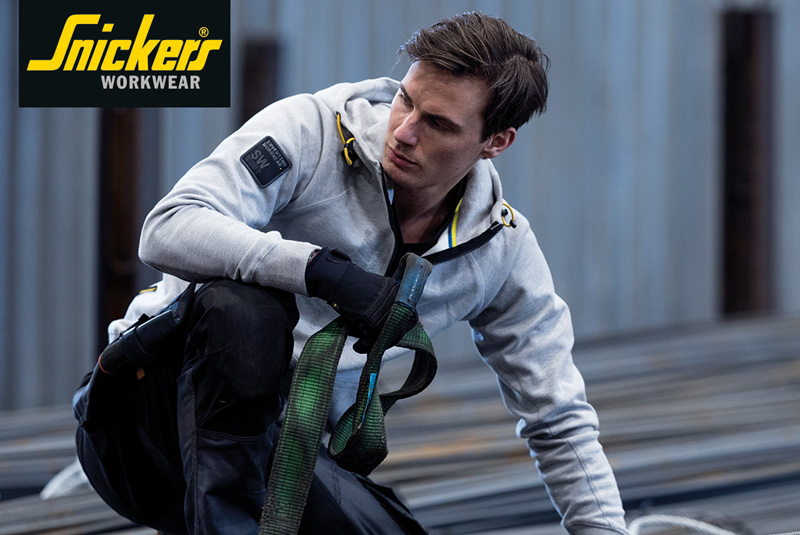
David Clark, Managing Director of the Hultafors Group UK, which owns Snickers Workwear and Solid Gear Safety Footwear, warns that working clothes can seriously affect your health and wellbeing.
Clothes have come a long way since humans first started wearing them over 100,000 years ago. Workwear itself has experienced a dramatic evolution in the last 60 years, from the early days of the boilersuit and coveralls to 21st century products that are much influenced by streetwear fashion and fabric technology trends.
Even up to the early 70s, designs were basic and product development was limited. Think about it, how much end user research went into a “Boiler Suit consisting of a single piece of clothing that combines trousers and a jacket to be worn over clothes in order to protect them from dirt while working”, or a “Bib-and-Brace Overall – a pair of trousers with braces attached”?
The simplicity of some workwear designs and their terminology – then and now – has long since been overtaken by R&D, fabric technology and end user demands that are all at the heart of today’s serious workwear development.
Designing working clothes for professional tradesmen and women has become a something of science in itself, with fabrics and garments developed to suit everything from different working environments and weather conditions to body shapes and personal wellness on site.
The workwear industry is awash with technology and terms – AVS, APS, Coolmax and wicking fabrics, wearable and 37.5 Technology – even things like integrated electrostatic dissipative protective benefits. What we wear is bound not only by personal needs but also by health and safety standards and regulations that govern performance and personal protection. But how does all of this impact on or improve personal wellbeing and performance at work?
Enclothed Cognition
Have you ever come across the term ‘Enclothed Cognition’? It is basically the influence that clothes have on the wearer’s mindset. Essentially, it’s said that clothing can enhance how we feel about ourselves and can improve our performance at work.
Researchers have identified a series of mindset changes that occur when we wear certain clothes. It’s said that the clothes we wear and how we wear them affect our behaviour, attitudes, personality, mood, confidence, and even the way we interact with others.
For instance, compare the guy who wears baggy jogging bottoms and an old sweatshirt to the one dressed in good looking working clothes, properly designed for working on site. There are both making a statement – about themselves, their mindset and their attitude to their work.
What we wear definitely affects the way we feel. Our clothes tell a story about who we are and most importantly, how we feel about ourselves.
However, even if you use workwear, poorly designed and ill-fitting working clothes can have a serious effect – not just on your mood and effectiveness on site but your overall health and wellbeing.
What if you’re wearing trousers that don’t fit properly?
If they’re loose, they’ll more than likely slip down and cause builder’s bum syndrome. But tight trousers or those done up with a tight belt can be problematic by causing pressure on the stomach – particularly if you’re bending or working in a tight space. It’s known as intra-abdominal pressure, which can trigger acid reflux, which pushes stomach acid back up where the esophagus and the stomach meet, causing heartburn.
It’s a common ailment not just in older adults, but in as many as 37% of 20 to 30 year olds. Even someone who isn’t prone to acid reflux can develop reflux if they wear tight clothes over as little as a two-week period.
Tight trousers can also cause severe abdominal pain, constrict the abdomen and put pressure on the intestines – which can interfere with their normal bodily function, leading to multiple symptoms, including gas distention, constipation, pain, and heartburn and indigestion.
So, choosing the right kind of working clothes on site can have a seriously positive effect on your personal wellbeing on site. Take a look at the new types of workwear that have comfort fabrics built into the garment design.
Our ‘Comfort Stretch’ fabric is being integrated into our newest working clothes to deliver maximum freedom of movement however and wherever you’re working – even in the most confined of workspaces. We also added it to specific areas of the clothes – such as around the waist – to facilitate ventilation and enhanced comfort – and to complement the likes of Cordura and GoreTex fabrics that deliver durability and foul weather protection.
The general idea behind integrating the ‘Comfort Stretch’ concept into our workwear is to maximise the movability of the body. We integrate it into the clothes to fit where the body bends or where it expands. It also means we can tailor our garments to a slimmer fit when needed and, ultimately, it makes the clothes much more comfortable to wear.
This is exactly what the feedback from tradesmen and women has told us – they want maximum comfort and functionality. So we’ve developed these hybrid garments that use a combination of materials to deliver precisely what these tradespeople want.
In conclusion, if you’re not careful, the clothes you wear on site can seriously affect your health – but if you do wear properly designed, good fitting clothes, you’ll approach the job in hand with the kind of positive mindset to get it done efficiently and comfortably.


